Clovis, CA Pollen and Allergy Report for Summer 2023
Pollen Allergy Trends in Clovis, CA
When is pollen lowest in Clovis, CA?

February
Lowest month total PPM
Avg. PPM
When is pollen highest in Clovis, CA?

March
Highest month total PPM
Avg. PPM
How does pollen in Clovis, CA compare to California?
Clovis has a lower average PPM than the state of California.
Clovis yearly avg PPM:
California yearly avg PPM:
How does pollen in Clovis, CA compare to the USA?
Clovis has a lower average PPM than the USA.
Clovis yearly avg PPM:
USA yearly avg PPM:
Is pollen worse this year in Clovis, CA?
Spring 2023 was about the same as 2022.
Spring 2023 PPM:
Spring 2022 PPM:
Average PPM in Clovis, CA
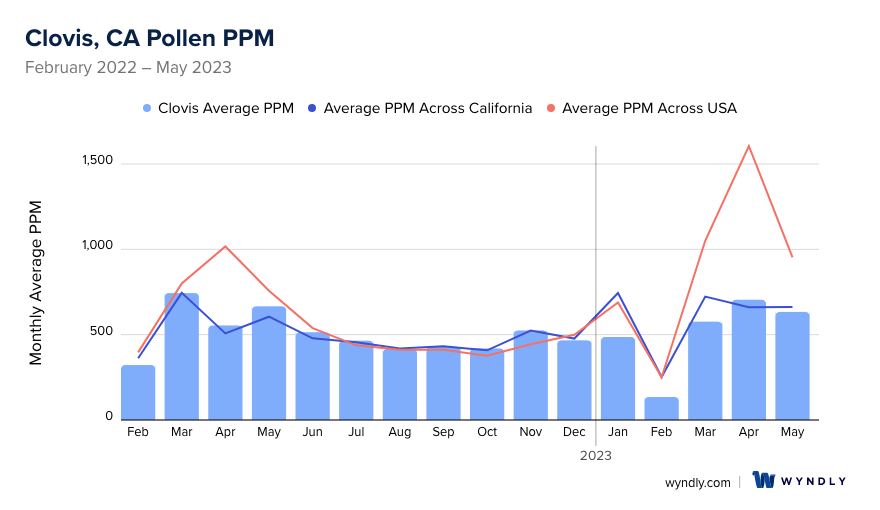
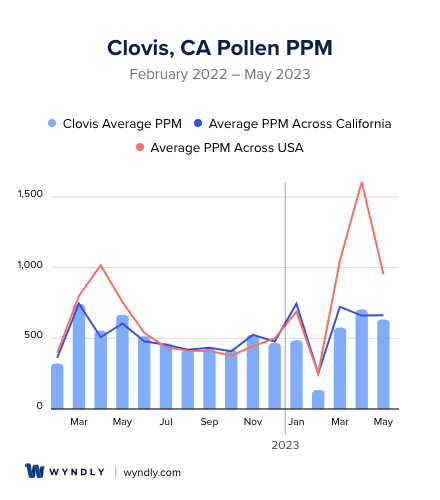
Clovis, CA Pollen and Allergy Breakdown by Month
Grass
When is grass pollen highest in Clovis, CA?
May has the highest grass pollen in Clovis, CA with an average PPM of
When is grass pollen lowest in Clovis, CA?
December has the lowest grass pollen in Clovis, CA with an average PPM of
Tree
When is tree pollen highest in Clovis, CA?
March has the highest tree pollen in Clovis, CA with an average PPM of
When is tree pollen lowest in Clovis, CA?
August has the lowest tree pollen in Clovis, CA with an average PPM of
Weed
When is weed pollen highest in Clovis, CA?
November has the highest weed pollen in Clovis, CA with an average PPM of
When is weed pollen lowest in Clovis, CA?
February has the lowest weed pollen in Clovis, CA with an average PPM of
Clovis, CA Pollen Monthly Breakdown by Pollen Type
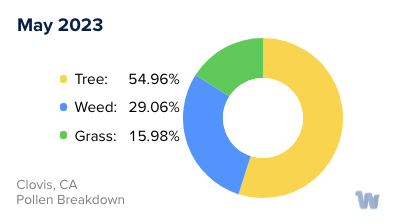
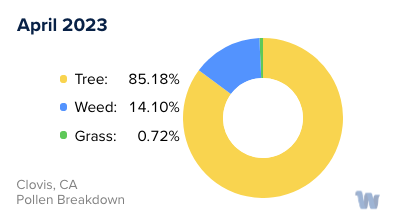
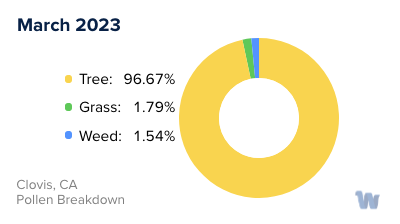
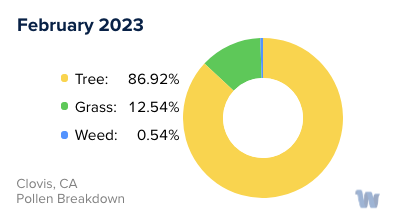
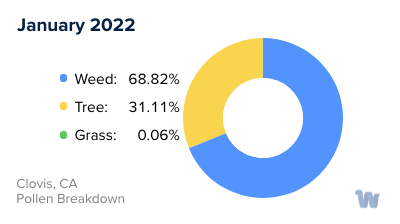
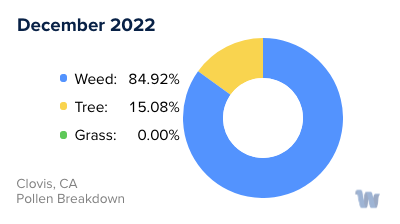
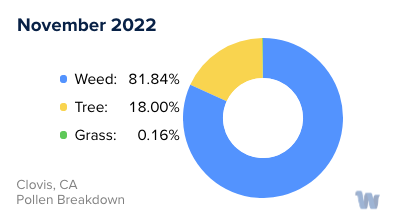
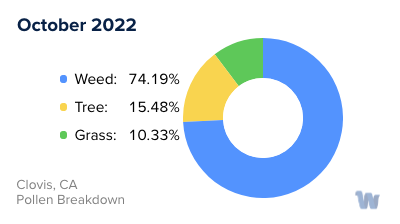
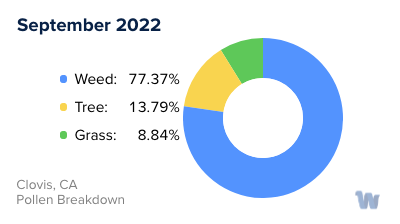
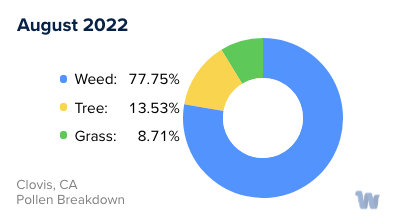
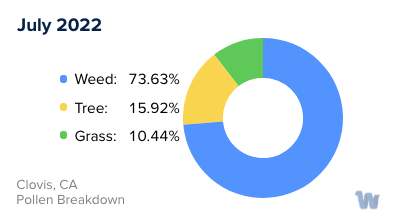
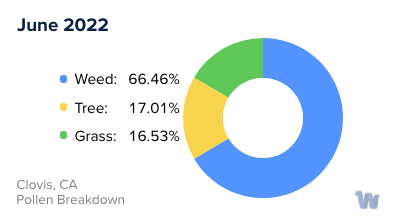
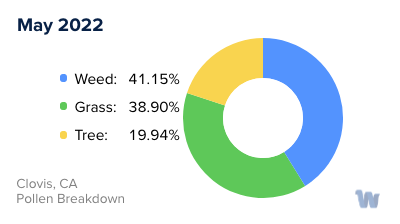
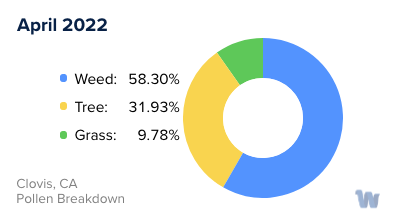
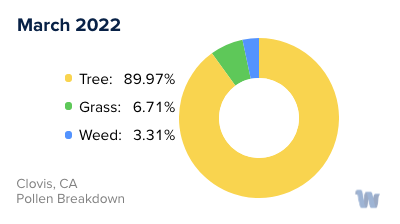
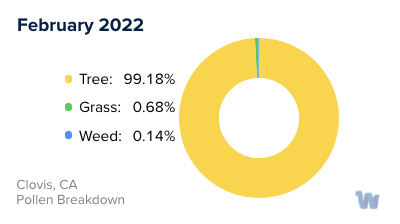
Pollen and Hay Fever in Clovis, CA
n the charming city of Clovis, California, residents and visitors alike might experience the common symptoms of pollen allergies, also known as hay fever. This condition is primarily provoked by three types of pollen: trees, grass, and weeds. Each of these allergens has its own peak season, which can contribute to a nearly year-long allergy season in the Golden State.
Tree pollen is a significant cause of hay fever and is prevalent in Clovis. It often starts appearing in late January, marking the onset of the allergy season in California. As winter gradually transitions into spring, the pollen counts can surge, potentially exacerbating symptoms for those sensitive to tree pollen.
Grass pollen typically follows in the footsteps of tree pollen. The warmer months of spring and summer, especially April and May, are peak times for grass pollen. During these months, it's not uncommon for pollen counts to be high, potentially leading to an increase in hay fever symptoms among susceptible individuals.
Finally, weed pollen tends to be a concern later in the year. It can become particularly prevalent in the fall, with September noted as a peak month. It's worth mentioning that the unique climate of California allows for a relatively extended allergy season, often not tapering off until October or November.
It's crucial to remember that the timing and severity of pollen seasons can vary from year to year and are influenced by a variety of factors, including weather patterns and precipitation. Despite these challenges, understanding the primary pollen types and their seasonal trends in Clovis, California, can help individuals anticipate and manage their hay fever symptoms better, contributing to a higher quality of life in this beautiful city.


